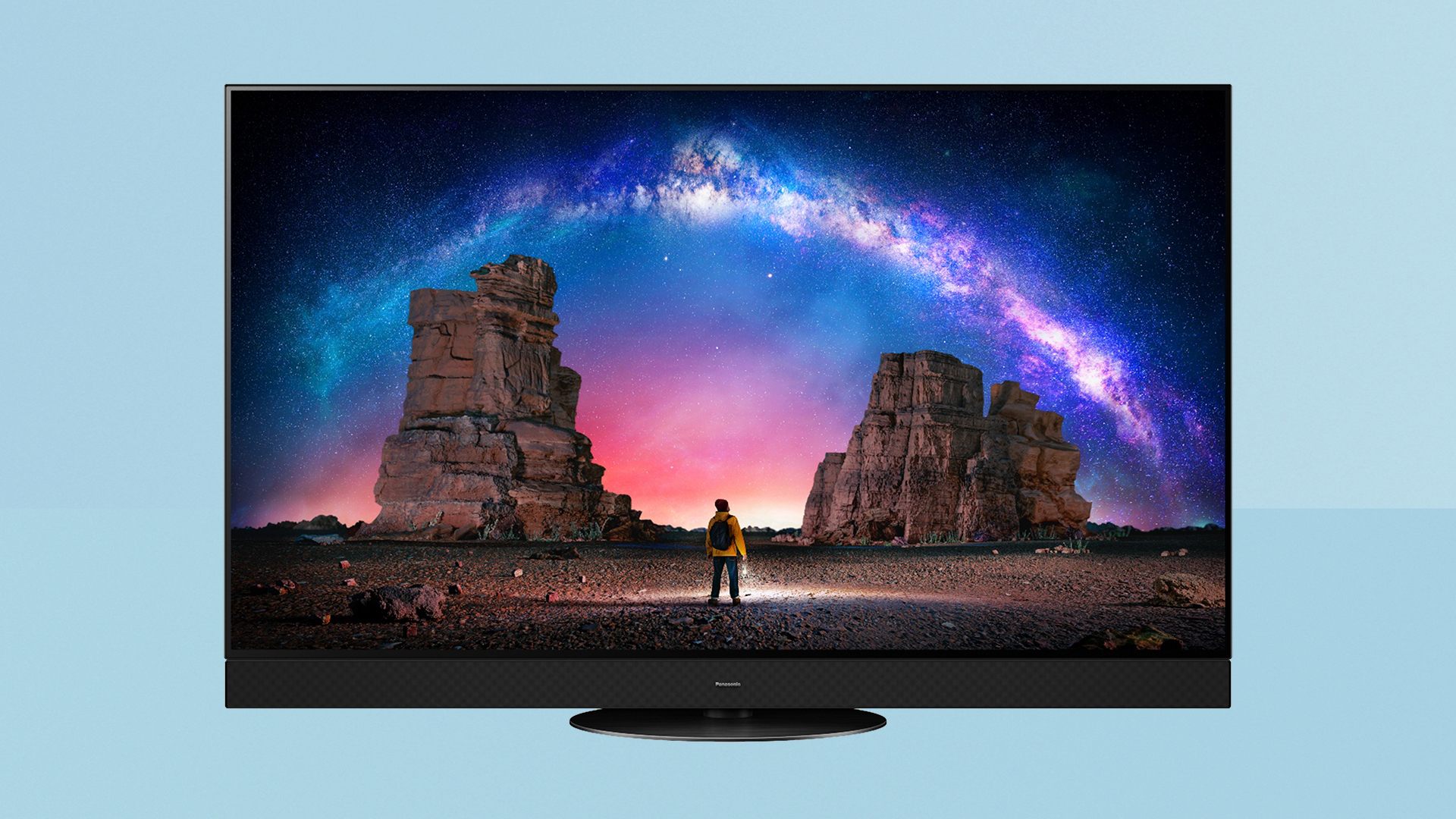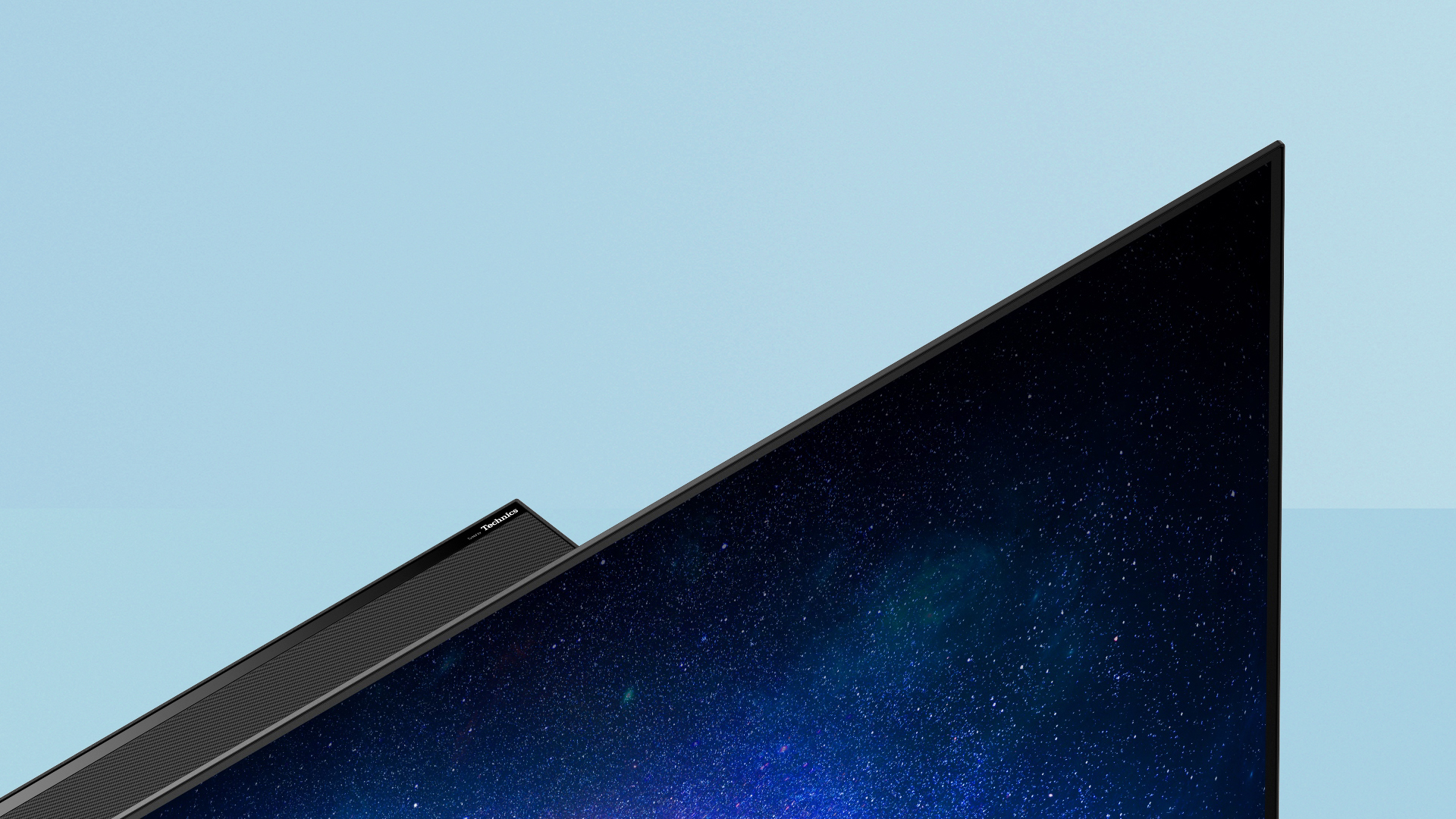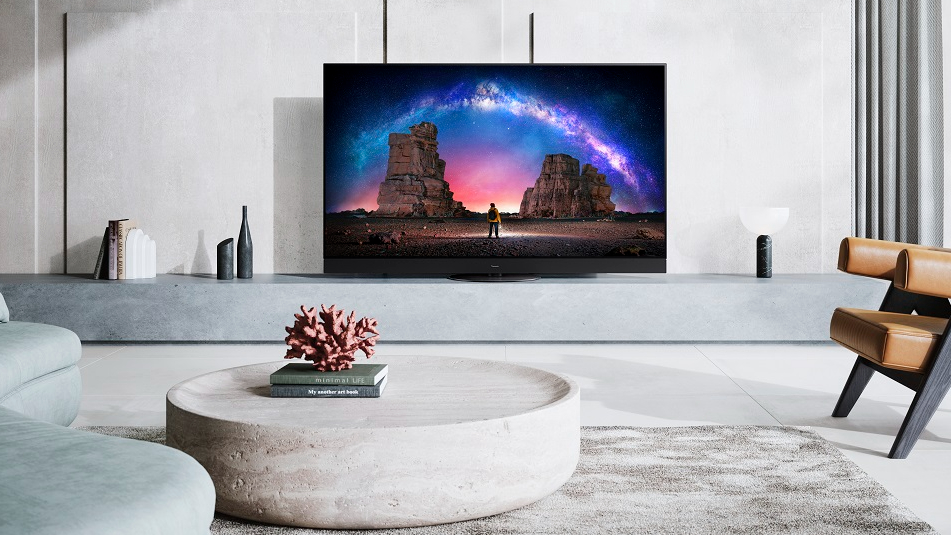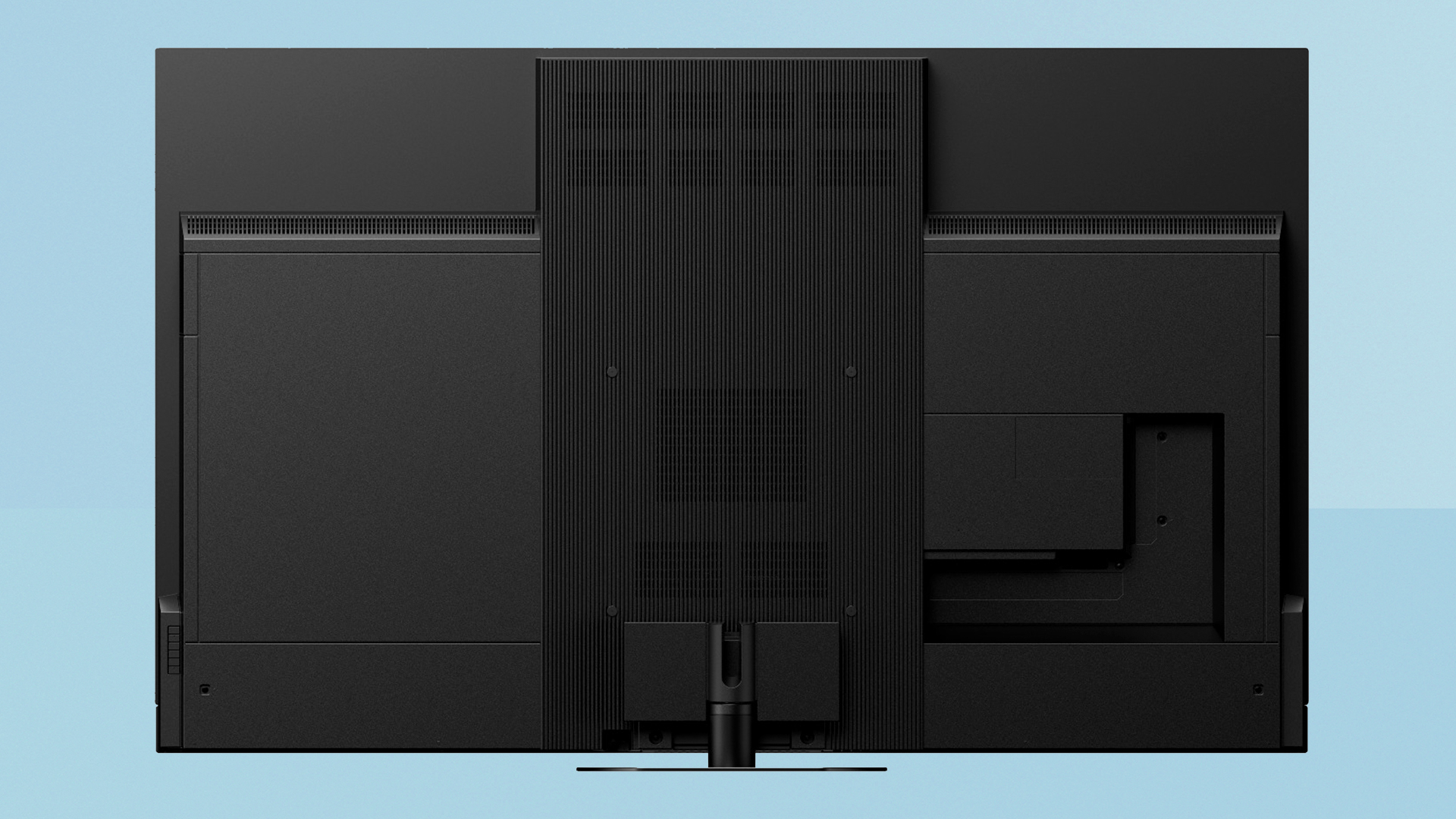Panasonic JZ2000 review (TX-55JZ2000): an astounding OLED 4K TV gets even better
The Panasonic JZ2000 is a super-bright OLED TV that still delivers OLED's excellent black levels, and brings a big range of other upgrades


The Panasonic JZ2000 is arguably the best OLED TV on the planet, and is priced like it. Its HDR performance is cinematic like you won't believe, and the audio system delivers rich positional Dolby Atmos sound. Panasonic has removed the small flaws its predecssor had, leaving a pristine 4K TV diamond.
-
+
Sublime, sophisticated picture
-
+
Entertaining Dolby Atmos sound
-
+
4K 120Hz support
-
-
Not every input is HDMI 2.1
-
-
Auto AI not always so smart
-
-
No size larger than 65 inches
Why you can trust T3
This Panasonic JZ2000 review looks at the latest upgrade to the no-compromise 4K OLED TV model that thinks it’s a cinema. The JZ2000 is most notable for its custom Master HDR OLED Professional Edition display, which uses a custom design to go brighter than any other OLED screen.
The Panasonic JZ2000 even beats out the new LG G1 for brightness and trades blows with the Sony A90J – and being brighter is a huge part of the push for both those screens, and makes them some of the best OLED TVs on the market. And then it throws in a fully integrated Dolby Atmos sound system on top as a final flourish.
The result is that HDR performance is better than basically any other OLED on the market, its colour accuracy is also peerless, while its 4K processing packs in huge amounts of detail and realism.
It's also got a great new smart TV system, that Dolby Atmos sound system is as good as any one-box soundbar, and it's been updated with HDMI 2.1 gaming features for next-gen consoles… it's the complete package, really, and is absolutely one of the best TVs on the planet.
It's available in 55-inch and 65-inch sizes, and it's the smaller model we tested for this review. So is this the ultimate OLED TV? You know what, it kind of is…
Panasonic JZ2000 review: Price & release date
The JZ2000 comes in 55- and 65-inch screen sizes (TX-55JZ2000 and TX-65JZ2000), officially priced at £2,699 and £3,499 respectively).
Panasonic sadly doesn’t sell its screens in North America, and the model doesn’t currently have availability in Australia either.
The LG G1 is available for £1,999 in 55 inches and £2,999 at 65, so is majorly cheaper – enough to buy you one of the best soundbars to make up for its relatively basic speakers compared to the Panasonic.
The Sony A90J is priced the same as the Panasonic at those sizes (at official prices, at least) – given that the A90J also has a more elaborate sound system, that's perhaps no surprise.
It's also worth nothing that the Sony and LG both have options larger than 65 inches, which the Panasonic does not.
So the price of the JZ2000 is not out of line with other 4K OLED TVs at the very top of the range, but is as premium as 4K TVs get, basically.

Panasonic JZ2000 review: Features & what's new
For the most part, the JZ2000 is similar to its predecessor, the HZ2000. That custom OLED panel technology, for example, is much the same – and the previous model also offered Dolby Atmos speaker tech. But what you can do with all of this has been developed in important ways.
This includes neat side-firing audio drivers to match the up-firing height speaker, Space Tune auto calibration for sound, and a whole new level of Auto AI processing provided by a new processor. It can now identify the content type you're watching, so that it can optimise sound and vision accordingly – similar to what most 'AI' processors now do, but very welcome all the same.
Connectivity is a big step up on previous Panasonic OLEDs. The HDMI quartet on this screen includes HDMI 2.1 functionality for the first time. There’s eARC support for soundbars on input 2 (although given the sophistication of the sound system on board, I can’t imagine anyone would plan to route audio out to a soundbar), plus VRR (Variable Refresh Rate) and HFR (High Frame Rate ) 4K 120Hz compliance on inputs 1 and 2; so that’s where you’ll want to dock your next-gen games consoles. All four HDMIs have ALLM (Auto Low Latency Mode) game mode support.
There’s also a trio of USB ports, a digital optical audio output and Ethernet. Wireless includes Bluetooth and Wi-Fi.
The set also offers HDMI Signal Power Link, which is apparently designed to simplify living with non-CEC supported devices like old telly boxes and disc players. I literally have nothing to plug in that lacks CEC (well maybe in the loft, but I’m not going up there), so I’ll just take Panasonic’s word on that one.
The JZ2000 heralds a huge update to Panasonic's smart platform. If you thought we were in for a little more tinkering around the edges, prepare for a surprise: Home Screen 6.0 feels very, very different – in a good way.
It builds on what we’ve seen before – customisable Home buttons are still front and centre – but adds more layers of refinement, like My Scenery, which allows you to customise your own image gallery, or chill to pictures and videos from Panasonic's Lumix Club, and curation. It feels fully formed, perhaps for the first time.
There’s a wide range of streaming apps – Netflix, Amazon Prime, Rakuten TV and BritBox amongst them, but Disney+ remains conspicuous by its absence, which is a disappointment. We also get Freeview Play, which brings with it integrated catch-up players for all the mainstream TV services (BBC iPlayer, ITV Hub, All 4, My 5, UKTV Play).
The JZ2000 also supports dual Bluetooth connection, which means the screen can transmit to two separate Bluetooth devices simultaneously. A couple can watch a movie late at night on headphones together without disturbing the rest of the house.
There’s also voice control with Google Assistant and Alexa.

Panasonic JZ2000 review: Picture quality
Let’s not beat about the box: the JZ2000 is absolutely gorgeous. An all-new processor, dubbed HCX Pro AI, can take much of the credit. Final detail is stratospherically high, textures beautifully realised, noise low, colour gradations smooth and sumptuous. This is fine champagne in screen form.
Its big party trick is being able to determine what type of content is being viewed, analysing frame-by-frame in real time, and comparing it to an on-board library. It doesn’t just do this for video, audio gets the AI treatment too.
The JZ2000 has been trained to recognise genres. Players in a stadium run over grass with a more authentic colour, while the audio system knows to add stadium-like ambiance to the soundmix at the same time.
Engaged using the Auto AI picture preset, Panasonic says the HCX Pro AI processor has been trained with over a million pieces of content, which should instil some faith in its abilities.
This smart auto pilot seems to work well enough for general viewing, but I was quickly persuaded to disengage it for movie night. That’s because by default it engages Intelligent Frame Creation and sets interpolation at maximum, so you don't get the accurate filmic 24fps motion you should. For a smart system, that's pretty dumb.
The JZ2000 features the same gloriously over-engineered Master HDR OLED Professional Edition panel as its predecessor, and it’s still stunning.
HDR peak brightness and overall zing are class leading. This OLED panel doesn’t fully dazzle in the same way mini-LED tends to on the likes of the Samsung QN95A and Samsung QN85A – its images are more subtle and nuanced – but you’re drawn in regardless.
In Normal viewing mode, we measured HDR peak brightness at more than 900 nits. That’s easily high enough to show off fancy HDR grading effects and specular highlights. With the Dynamic preset, using a 5 per cent measurement window, it hits 950 nits. You probably won’t elect to use that viewing mode much, but it really sings with animation, and shows what the panel is made of.
Inspired engineering from Panasonic’s R&D team delivers an enhanced dynamic range, with peerless black level performance and superb shadow detail. With this OLED you’ll have no trouble seeing something menacing in the shadows (if that’s what the cinematographer intended).
Other OLEDs manage this too, of course, but the extra brightness means that the JZ2000 gives you a bigger total range of HDR than any other OLED, meaning more realism in things that need it, and an even better way to show off the cool looks of movies and shows that are more stylised.
Fine colour tuning is led by Hollywood colourist Stefan Sonnenfeld, and there’s an authenticity to its hues which is mesmerising. Skin tones retain believable tonality, even when the rest of the frame is rich with wild visual effects.
The JZ2000 supports a refreshingly wide range of HDR formats and flavours. There’s Dolby Vision IQ, which adds dynamic adjustment to ambient light, Filmmaker Mode with Panasonic’s own Intelligent Sensing (again, a sensor based auto correction mode), and HLG Photo.
There’s even support for HDR10+ Adaptive, which again dynamically adapts HDR content to the room lighting conditions of the viewing area. Only Philips offers comparable HDR support in high-end OLED TVs – LG and Sony both offer Dolby Vision only.
Gaming, long a weak point for Panasonic, is no longer an afterthought. The JZ2000 offers a big improvement in input lag, with latency down to 14.5ms in Game mode (1080/60). This makes it a decent choice for players, combined with the Variable Refresh Rate and 4K 120Hz support.
Panasonic JZ2000 review: Sound quality
I've listened to, and enjoyed, a good number of novel enhancements designed to improve TV audio. Samsung has OTS+, with discreet drivers peppered around its QLED panel, while Sony employs transducers that vibrate the glass itself, as part of its Acoustic Surface technology initiative. They all do great jobs.
Here, Panasonic has taken a far more literal approach to cinematic sound, refining its onboard Dolby Atmos audio system with additional side-firing enclosures, placed adjacent to the rear-mounted height speaker, and it gives all rivals a run for their money.
Providing the front soundstage is a forward-facing soundbar-style array below the screen. The set boasts a seven-channel sound system, plus subwoofer, with a combined output of 125W.
The whole lot has been tuned by the golden-eared boffins at Technics. Panasonic dubs this configuration as 360° Soundscape Pro, but it's simpler to just think of it as genuinely effective built-in Dolby Atmos.
When installing the JZ2000, you’re invited to optimise audio performance using the set’s own Space Tune calibration system. This involves a routine of peeps and whistles while it tests the acoustics of your room.
While the TV doesn’t really have the capacity to deliver deep bass, it does at least make a good mid-bass effort, and certainly doesn’t jettison low frequencies – it's just that a subwoofer based system would give you more.
You also don’t get sound from behind you, but what you do get is a thoroughly entertaining audio presentation that goes high and wide, easily matching a high-end one-box soundbar.

Panasonic JZ2000 review: Design & usability
You might think that with a whole Dolby Atmos sound system strapped to its back, the JZ2000 might look a tad bulky. Not a bit of it. The set is stylishly slim, even with those additional speakers, extending the depth to just 69cm. Thicker than most OLED TVs, absolutely, but… well, you can probably live with 7cm, right? You'll get by.
There’s barely a bezel to speak of, with the Technics speaker bar blending seamlessly. It’s an elegant, minimalist confection.
The panel itself sits on a circular pedestal, which you can spin to accommodate different viewing positions.
The supplied remote is a heavyweight premium affair, with brushed finish, that feels nice in the hand. There are dedicated shortcut buttons for Netflix, Prime Video, Rakuten TV, YouTube and Freeview Play.
Navigation and responsiveness is excellent. This new sixth iteration of the brand’s Home platform is the best yet. Menu bars pop up and scroll down, but they feel well orchestrated rather than clumsy. As always, there’s copious menu tinkering available, but you don’t need to deep dive. Everyday controls sit in a handy, graphical bar.
Panasonic JZ2000 review: Verdict
Panasonic has partnered its superb Master HDR OLED Pro panel with an equally accomplished AI processor and the results verge on jaw-dropping. The JZ2000 delivers bright pin-prick HDR and looks supremely cinematic. The fact that it supports Dolby Vision and HDR10+ Adaptive probably helps.
The upgraded Atmos sound system is also a blast: rich, expansive and involving.
We’re also fans of the new, slicker My Home Screen v6.0. Panasonic has experimented with the Android OS on its cheaper LED models – we’re kind of glad that didn’t make the cut here.
All things considered this is a peerless premium screen. The only downside is it’s expensive – but then you knew it would be, right?
Panasonic JZ2000 review: Also consider
The LG G1 is a very tempting competitor here if you already have a sound system available. It's brighter than LG's previous models thanks to a new 'OLED evo' panel, though not as bright as the JZ2000. It's image quality is unimpeachable, its gaming support and smart TV features are fantastic (and you get HDMI 2.1 on all four sockets), and it looks incredible at just 5mm thick and wish a totally flush wall mount. One downside: it only comes with that wallmount – no stand or feet at all (but you can buy some). Here's our full LG G1 review.
The Sony A90J is the closest to the JZ2000 overall – it's another ultra-elite OLED, and its panel reaches the same kind of brightness levels. Sony's image processing is class-leading, which makes this TV probably the best on the planet for upscaling HD to 4K, and for making SDR video look closer to HDR. The sound quality is impressive too, though it lacks the upfiring speakers of the JZ2000, and it doesn't have VRR functionality yet. Here's our full Sony A90J review.
Sign up to the T3 newsletter for smarter living straight to your inbox
Get all the latest news, reviews, deals and buying guides on gorgeous tech, home and active products from the T3 experts
For over 25 years, Steve has been casting his keen eyes and ears over the best that the world of TV and audio has to offer. He was the creator of Home Cinema Choice magazine, and contributes to huge range of technology, home and music titles along with T3, including TechRadar, Louder, Ideal Home, the i newspaper, and more.
-
 Warning: Ciele’s refreshed Elite Collection may cause excessive garment envy on race day
Warning: Ciele’s refreshed Elite Collection may cause excessive garment envy on race dayFlex on your run crew with Ciele’s latest drop
By Matt Kollat Published
-
 Smeg adds a touch of navy sophistication to its iconic breakfast set
Smeg adds a touch of navy sophistication to its iconic breakfast setIt's a minimalist's dream
By Lizzie Wilmot Published
-
 My most anticipated Netflix movie of the year gets a wild new trailer
My most anticipated Netflix movie of the year gets a wild new trailerHavoc looks pretty unbelievable
By Max Freeman-Mills Published
